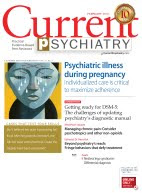Monday, August 3, 2009
Life after near death: What interventions works for a suicide survivor?
Sarah M. Jacobs, MEd
Fourth-year medical student, Mayo Medical School, Rochester, MN
J. Michael Bostwick, MD
Associate professor of psychiatry, Mayo Clinic College of Medicine, Rochester, MN
Completed suicide provokes a multitude of questions: What motivated it? What interventions could have diverted it? Could anyone or anything have prevented it? The question of who dies by suicide often overshadows the question of what lessons suicide attempt (SA) survivors can teach us. Their story does not end with the attempt episode. For these patients, we have ongoing opportunities for interventions to make a difference.
A history of SA strongly predicts eventual completion, so we must try to identify which survivors will reattempt and complete suicide. This article addresses what is known about the psychiatry of suicide survivors—suicide motives and methods, clinical management, and short- and long-term outcomes—from the perspective that suicidality in this population may be a trait, with SA or deliberate self-harm (DSH) as its state-driven manifestations. When viewed in this manner, it is not just a question of who survives a suicide attempt, but who survives suicidality.
Read full text (free access)
Listen to Dr. Bostwick explain how the 'script' of your patient's suicide attempt can help you plan effective treatment
Comment on this article
Email the editor
Subscribe to:
Post Comments (Atom)


No comments:
Post a Comment